
HOW TO GET AROUND IN ITALY
If you are planning to travel to Italy, you must already know about our rich history, stunning landscapes, and vibrant culture. What you would like to discover now is how to get around in Italy. The good news is, Italy offers a diverse range of transportation options that make travelling across the country both convenient and enjoyable. Whether you’re exploring bustling cities or picturesque countrysides, understanding the means of transportation in Italy can enhance your travel experience. So, read up as I am going to explain how to get around in Italy, allowing you a stress-free, amazing holiday.
Table of Contents
- How to get around in Italy: Trains
- How to get around in Italy: Buses
- How to get around in Italy: Cars
- How to get around in Italy: Ferries
- How to get around in Italy: Metro and Trams
- How to get around in Italy: Bikes and Motorbikes
- Now you know all that you need to get around in Italy
How to get around in Italy: Trains
Italy boasts an extensive and efficient railway network, making trains one of the most popular and practical ways to get around. Train travel in Italy is not only convenient but also offers breathtaking views of the countryside, coastlines, and mountains and once you’ve found your seat, you can lower your backrest and relax, as all the rest is taken care of for you.
The high-speed trains, such as the Frecciarossa and Italo, connect major cities like Rome, Milan, Florence, and Naples in just a few hours. These trains are fast, comfortable, and offer various classes to suit different budgets. They are generally on time, as they have priority way at busy stations. For these trains, you will have to book in advance, as you might not find availability on the spot.
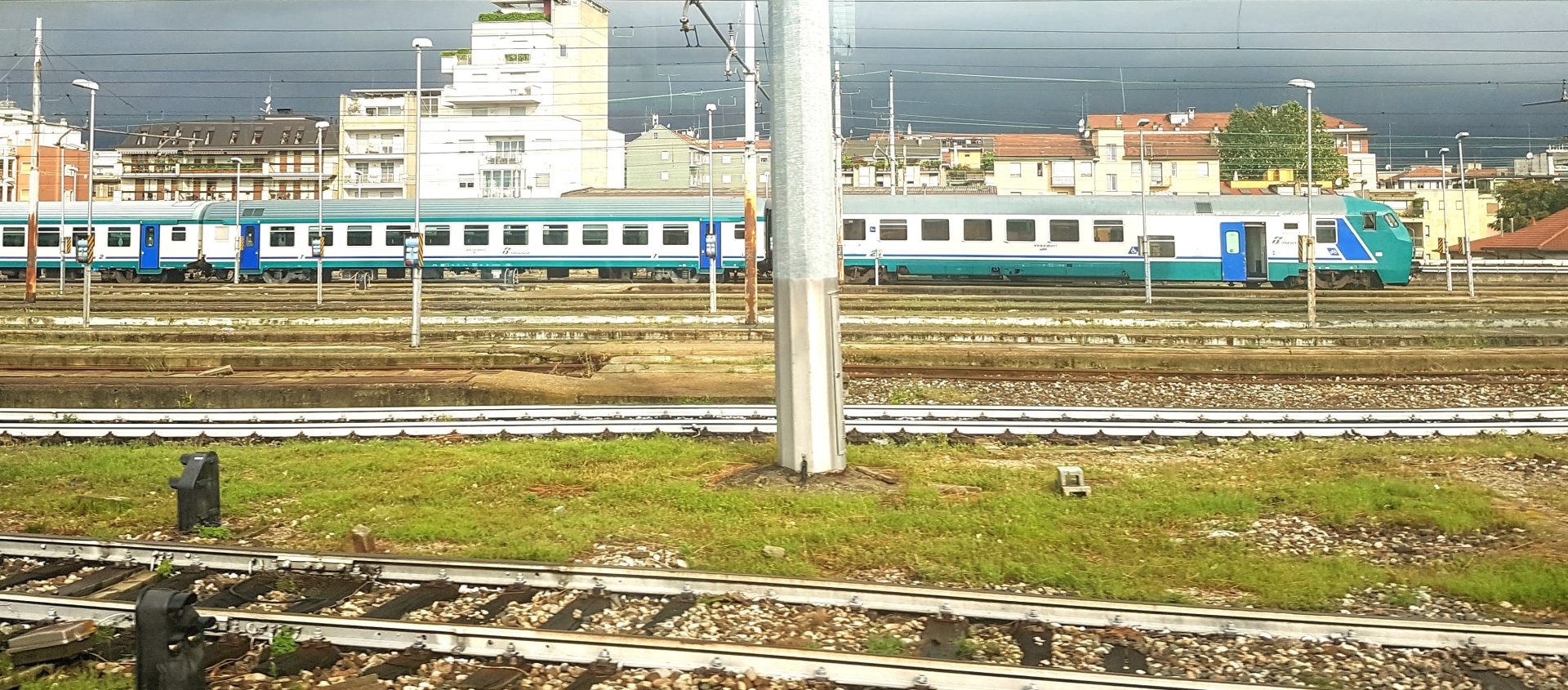
For those looking to explore smaller towns and rural areas, regional trains provide access to less touristy destinations. These trains are typically older and less comfortable, they stop at every small town station, making the travel slower and long-lasting.
While I highly suggest everyone use the high-speed trains to get around in Italy, I would advise using a regional or local train only for those of you who are on a budget, looking for authentic adventures and/or willing to adapt to less comfortable/desirable situations. When you need to catch a train to get around in Italy, please keep in mind these easy instructions:
- get to the train station in advance and not at the time. Our train stations are always very busy, and you will need time to check the train timetable and find out from which platform your train is leaving;
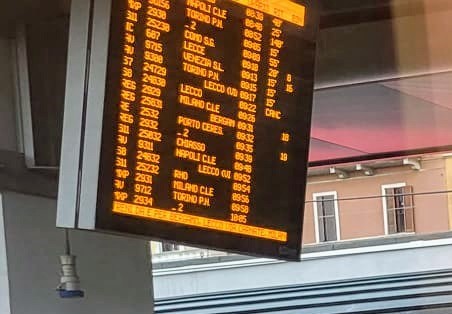
- you will need time to physically walk to the platform. Be aware that some stations don’t have lifts and/or escalators, so you might need to drag your luggage with you up and down flights of stairs;
- if you have a paper ticket, you will need to find a validation machine. Normally, they are dark green and are attached to walls and spread throughout the station. Most stations have one right in the platform area. You need to validate your ticket before getting on the train, otherwise, you will be fined;
- if you have an e-ticket, you will have to check-in before the train leaves the station.
How to get around in Italy: Buses
Public transportation is well-developed in Italy, and we daily use buses to get around. Local buses are widely used within cities and towns for short distances and daily commutes. You can use buses when you are in a big city and want to visit the surroundings. For example, you can use a bus if you want to visit the Reggia di Venaria Reale from Turin; or you can catch a bus to visit Lucca from Florence, or you might want to get on a bus to go to the Pompeii archaeological site from Naples.
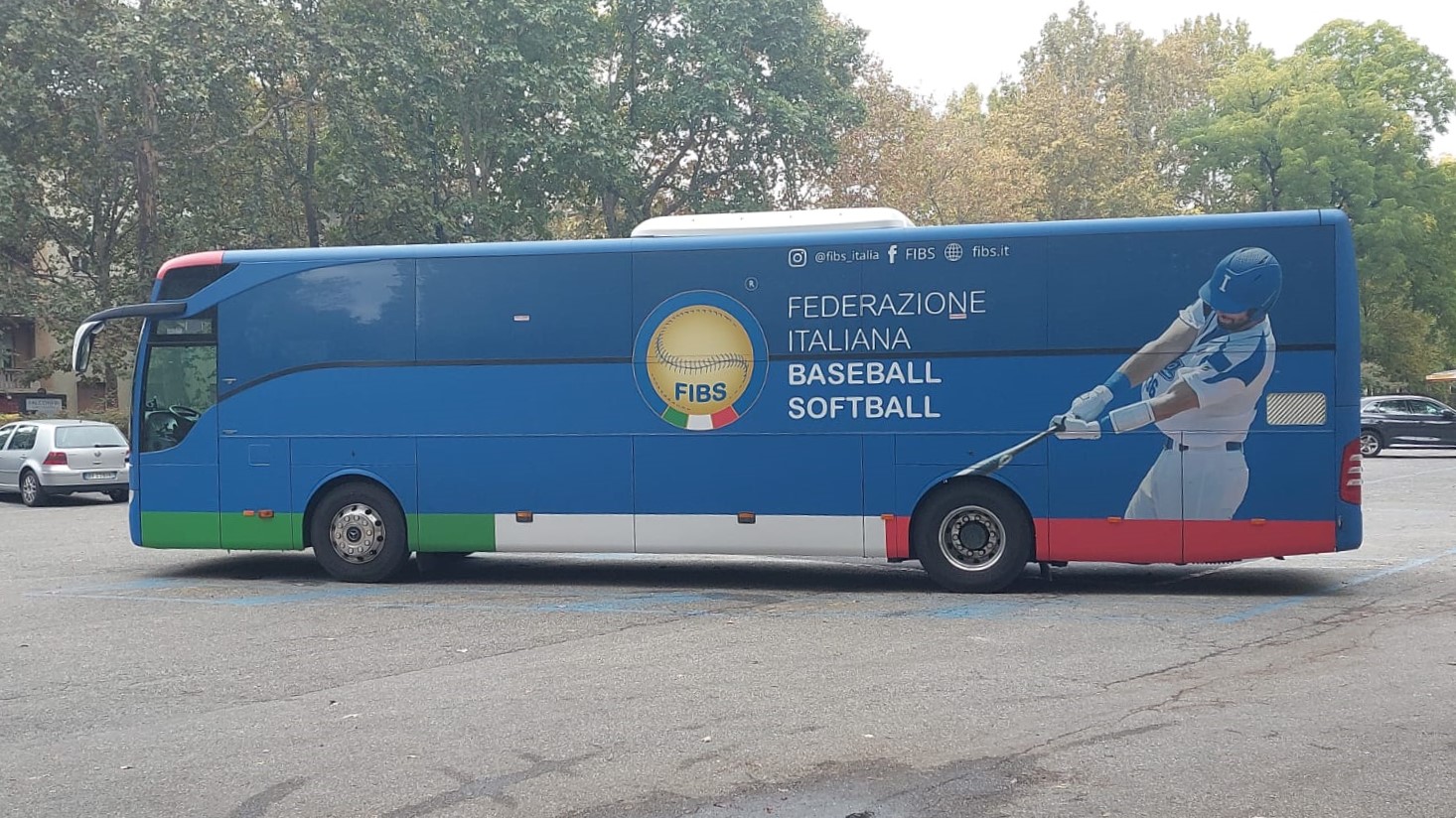
Buses also complement the train network by connecting areas that trains do not reach. In rural or mountainous regions, buses might be the only public transport option, making them essential for locals and tourists alike. For example, if you would like to go skiing in Champoluc or if you would like to go to Barolo for a wine tasting.
Long-distance coaches operated by companies like FlixBus offer travel between cities and regions. This way of travelling is targeted to people who travel on a budget. I personally wouldn’t suggest you to use Flixbus, as it can be quite the experience!
How to get around in Italy: Cars
Renting a car in Italy is ideal for travellers who want the freedom to explore at their own pace. Italy’s road network is well-developed, with highways (autostrade) connecting major cities and scenic routes offering picturesque drives.
However, driving in Italian cities can be challenging due to narrow streets, limited parking, and restricted traffic zones (ZTL). It’s important to familiarize yourself with local driving rules to avoid fines. If you are planning to rent a car and drive in Italy, have a look at my specific post, where I give you all the detailed information you will need to drive in Italy and have a remarkable experience (avoiding fines!).
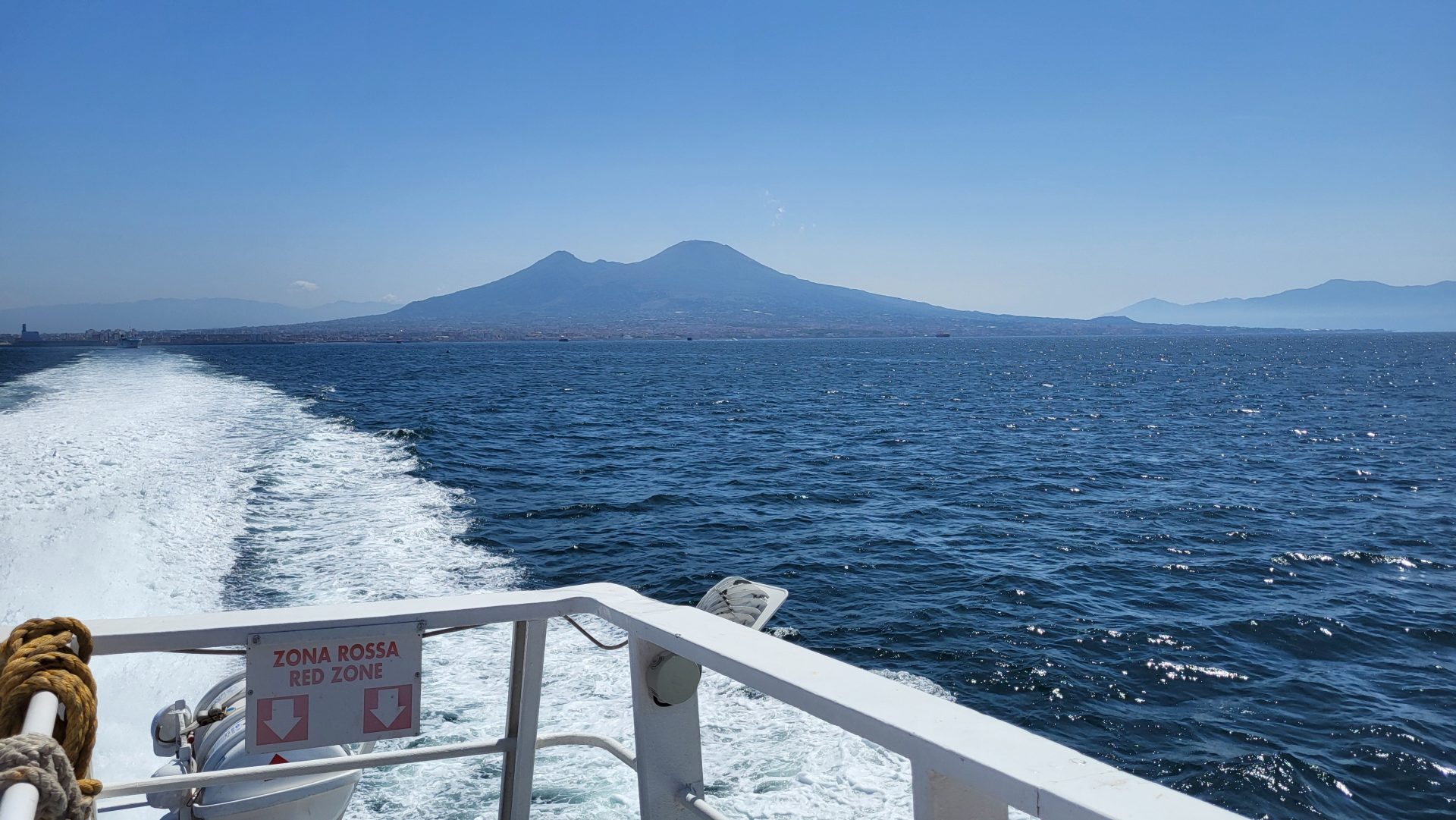
How to get around in Italy: Ferries
Italy’s extensive coastline and numerous islands make ferries a vital part of the transportation system. Ferries connect the mainland to the major islands such as Sicily and Sardinia, as well as smaller islands like Capri, Ischia and Procida from Naples and Sorrento, and Isola d’Elba from Piombino (Tuscany).
They are also a good way to get a first glimpse of the sea while travelling, even if my suggestion would be to book a boat tour if your goal is to really enjoy the sea.
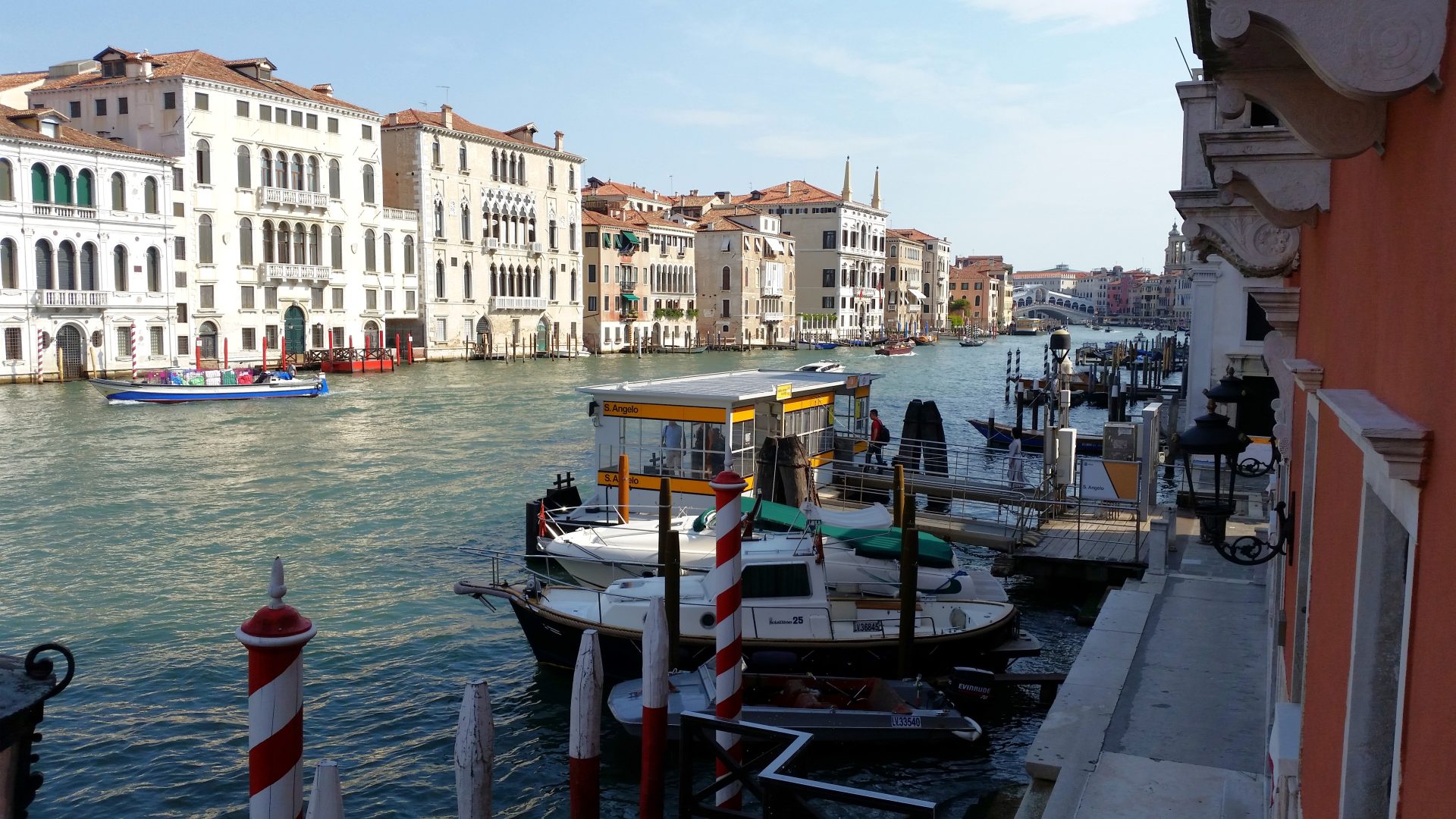
In Venice, Vaporetti (water buses) serve as public transport along the canals and to the islands of Murano, Burano, Torcello, and smaller ones, providing a unique way to get around the city.
How to get around in Italy: Metro and Trams
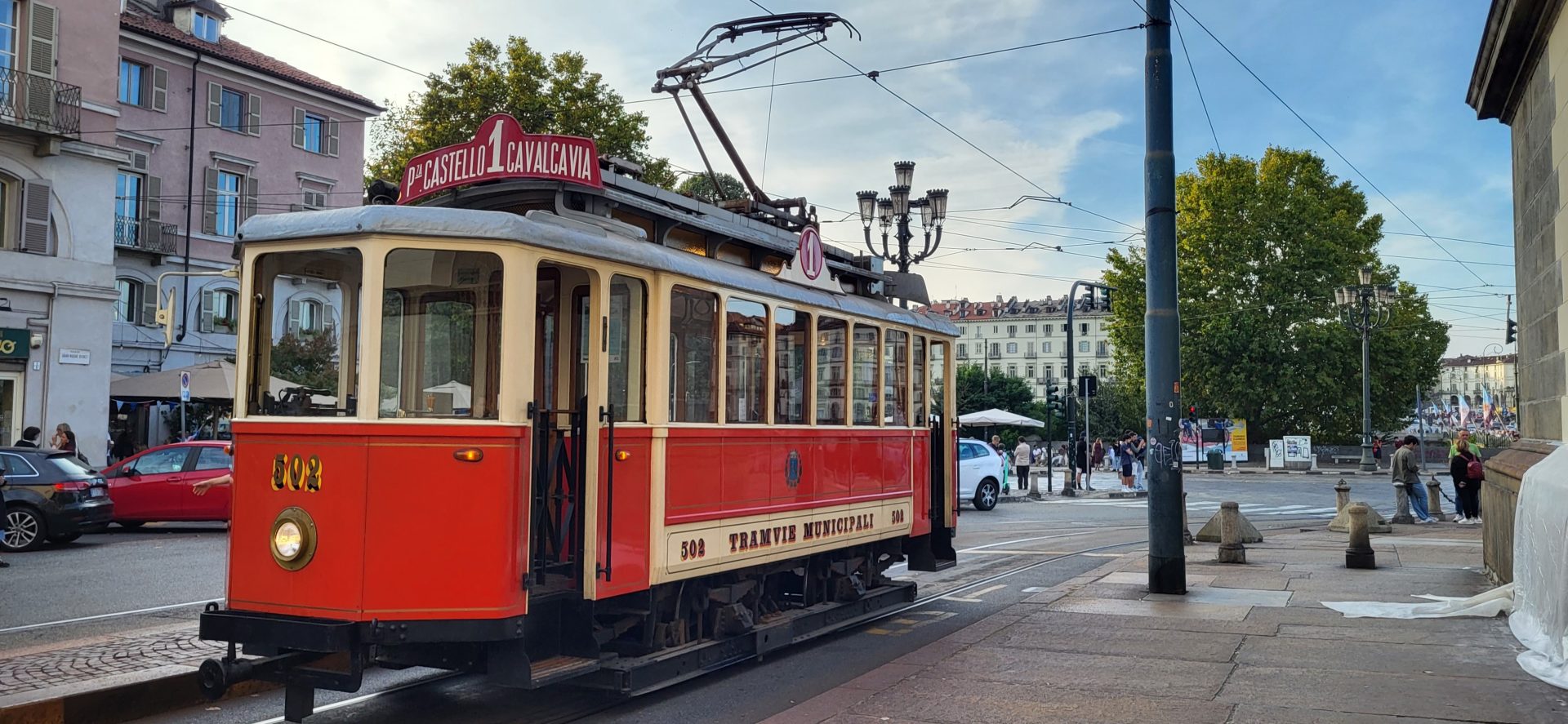
Major cities such as Rome, Milan, Turin, and Naples have metro systems that efficiently handle urban transport needs. We use the metro a lot, so it is normally overcrowded, especially on those lines which connect the city centre and the main tourist attractions, so be prepared to make your way among millions of other people. Don’t forget to buy your ticket (either through dedicated apps or in the automatic machines, pay with coins, or a debit/credit card) or you won’t be able to pass the turnstile.
Trams and buses complement the metro networks, ensuring easy access to various neighbourhoods. Don’t forget to buy your ticket (either through dedicated apps or at the tobacconists’/newsagents’) and validate it once you get on the tram/bus.
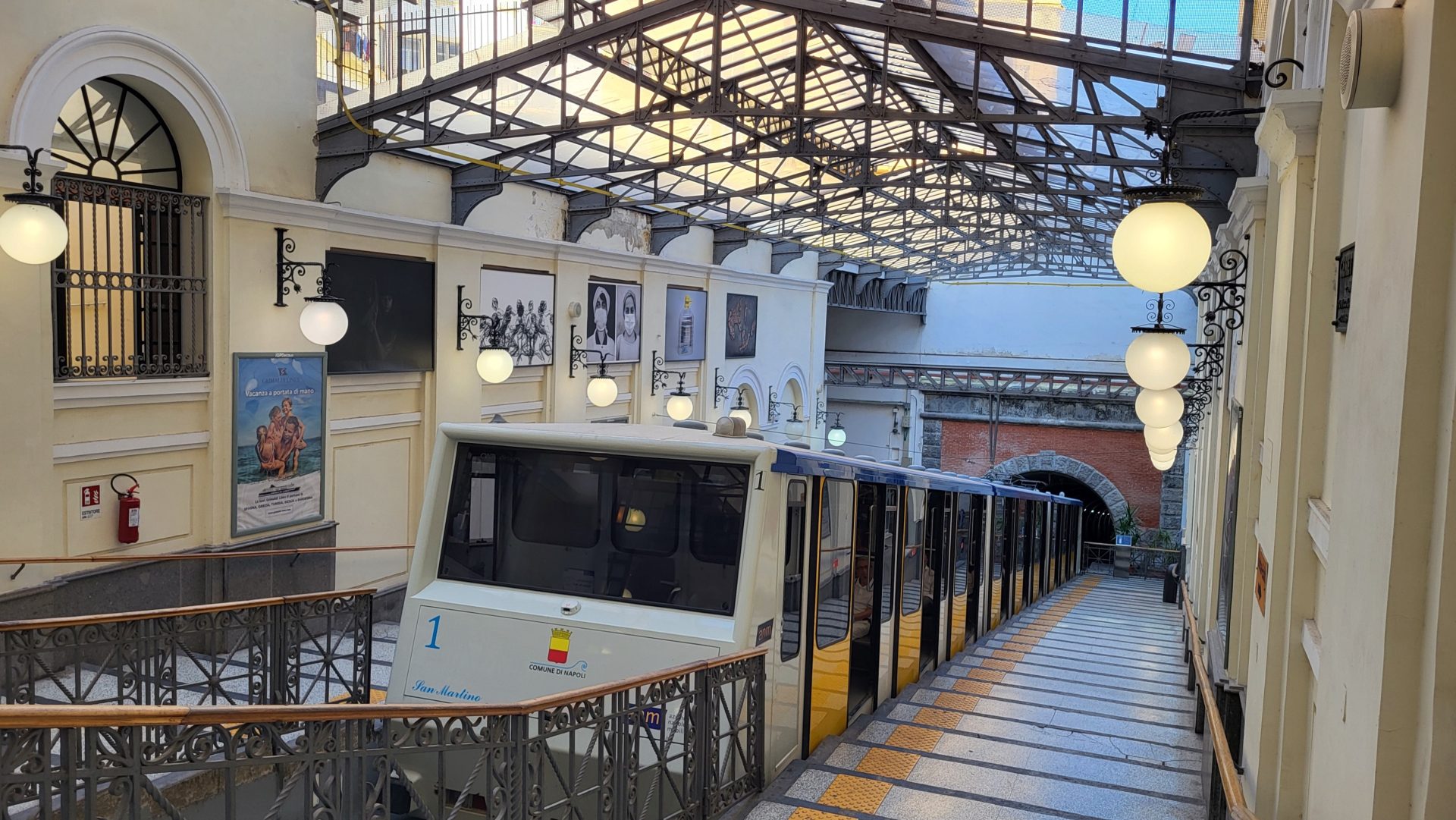
In cities like Turin and Milan, you can also get on a historic, restored tram, which will offer you a nice, unique tour of the city centre. In Naples, you will find the funicular, an enjoyable, quick way to get from downtown to Vomero and Posillipo hills.
How to get around in Italy: Bikes and Motorbikes
Another good way to visit and enjoy our cities is by bike. Many Italian cities offer bike-sharing programs and scooters, promoting eco-friendly and flexible transportation options. In all the main cities and towns, there are many bike lanes and bike tourist itineraries.
In general, our bike lanes are safe and in comparison to the US, our car drivers are more used to the cyclists. As we don’t have a separate lane for cars turning right and cars are not allowed to turn right on red, the bike lanes in Italy don’t get crossed by car traffic. This results to be safer than in the US.
To the contrary, if you come from a North European country, like the Netherlands, you might find our bike traffic and circulation not as advanced as the one you are used to.
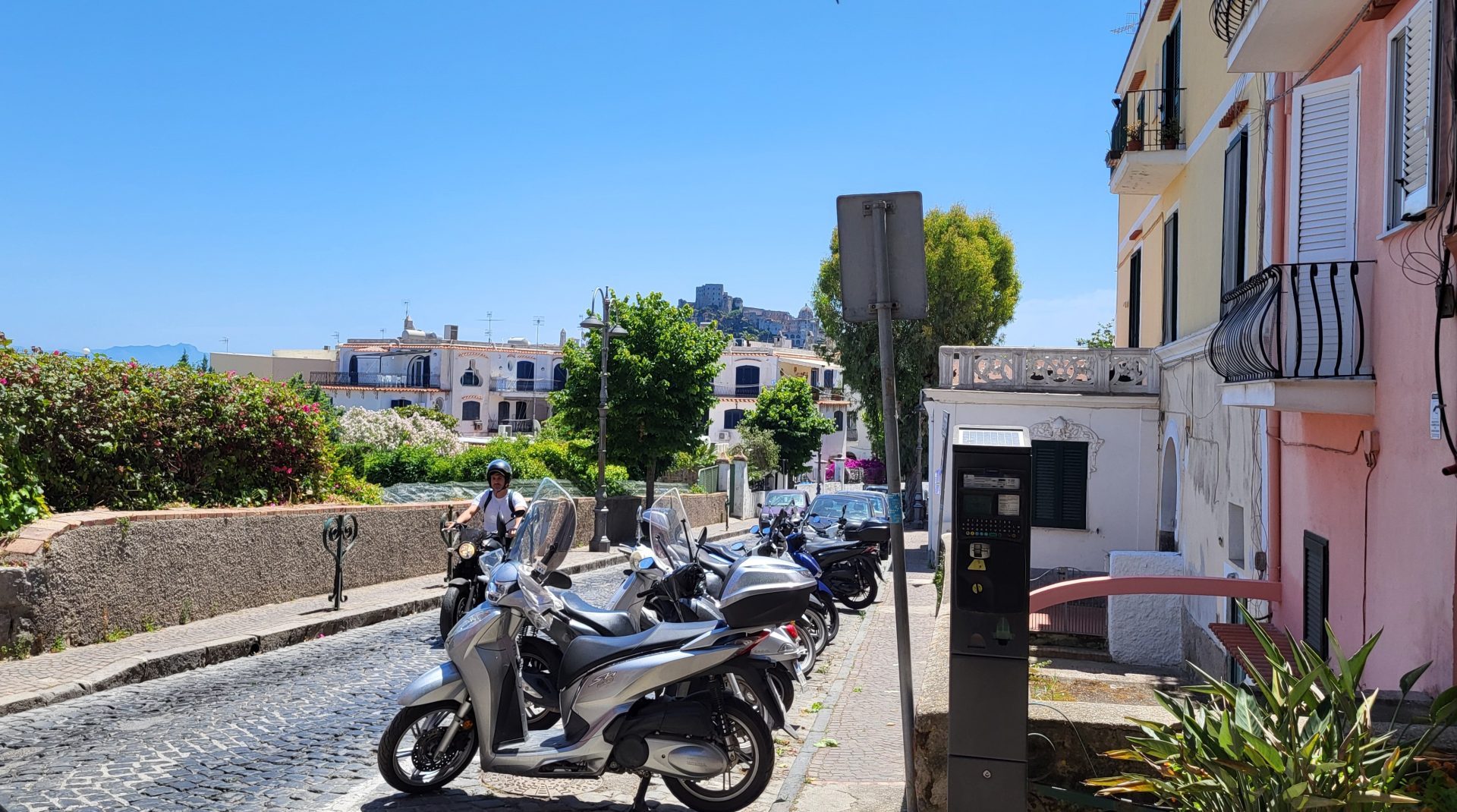
In the big, crowded cities, we like to get around on a motorscooter or Vespa, as it’s quicker. In some destinations, like the Amalfi Coast, you will be able to rent a motorscooter, typically a Vespa, to tour around. Despite it being your “Italian dream”, this is not to be underestimated: driving a motorscooter or a Vespa is not easy if you have never driven one. Please, if you decide to rent one, drive carefully, slowly and safely.
Now you know all that you need to get around in Italy
Italy’s transportation system is diverse and well-integrated, catering to different types of travellers and destinations. Whether you prefer the speed of high-speed trains, the flexibility of a rental car, or the charm of a ferry ride, Italy offers multiple ways to explore its beautiful landscapes and vibrant cities. I hope this post helped you to understand all the different options you have to get around in Italy and will help you plan a smooth and memorable journey through our captivating country. Keep on planning your Italian adventure with my city guides.